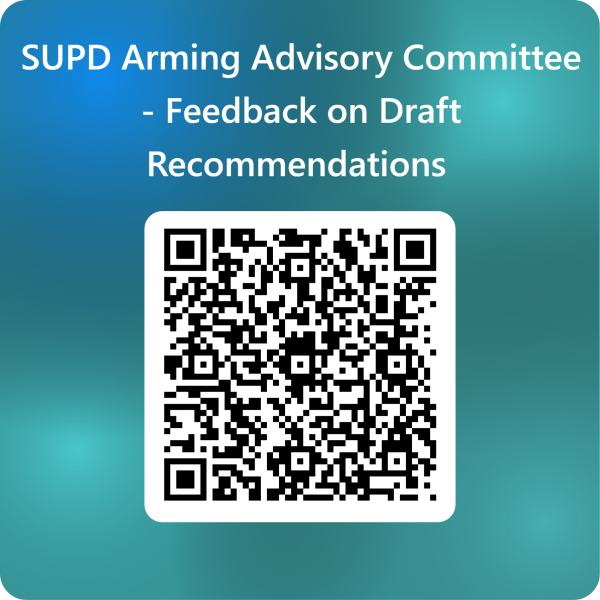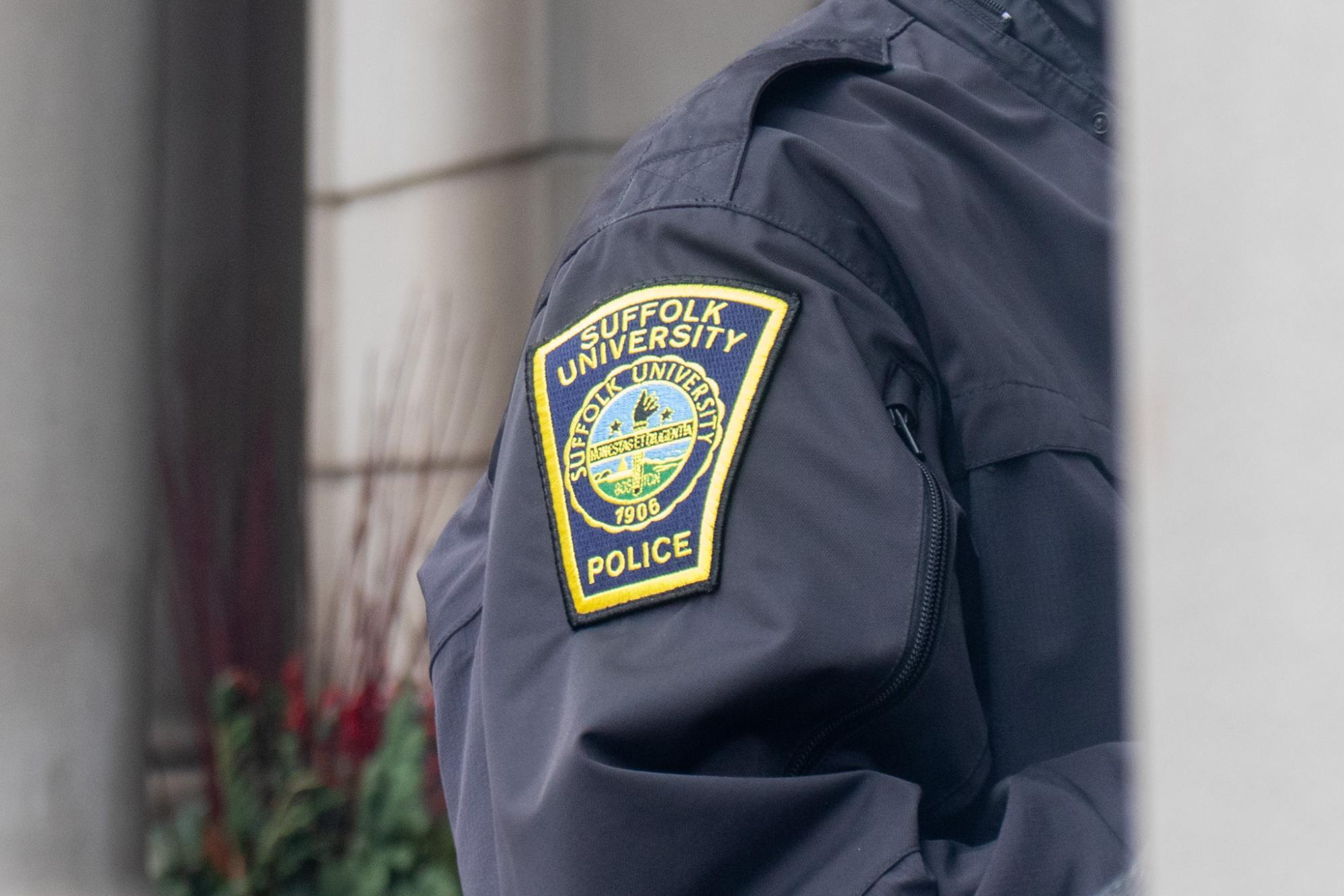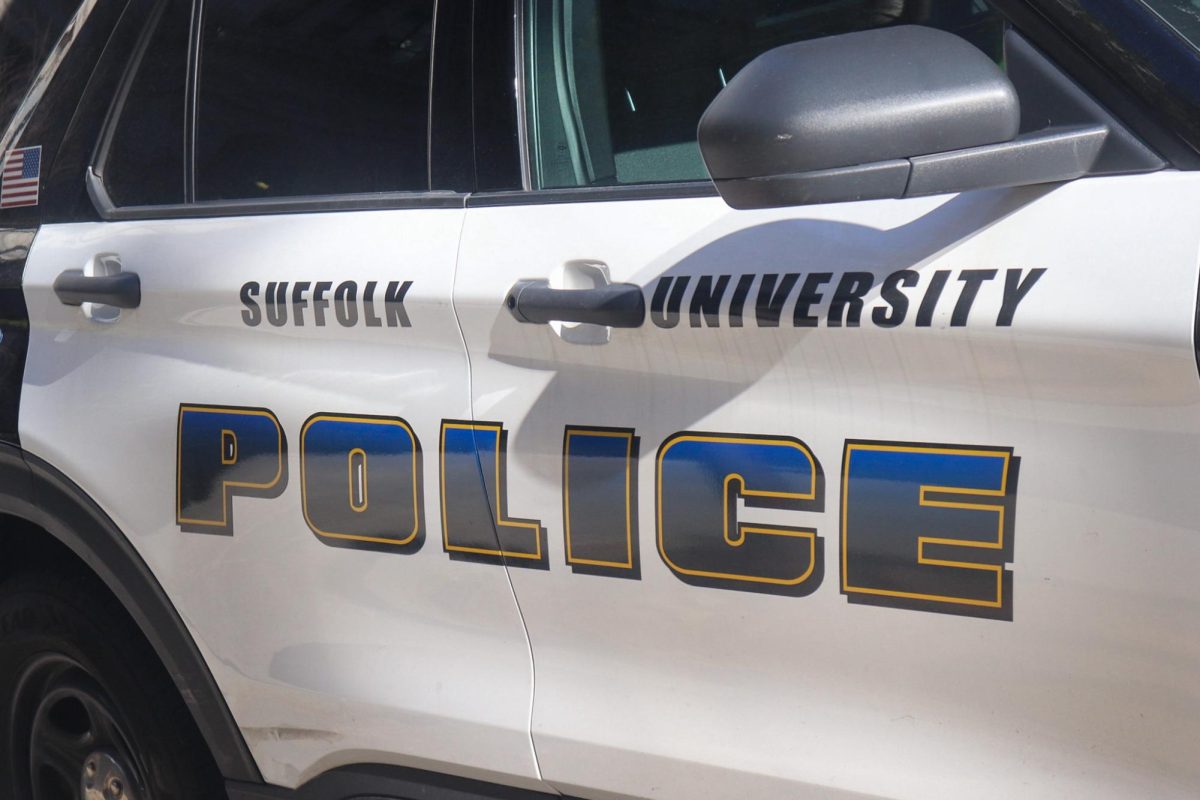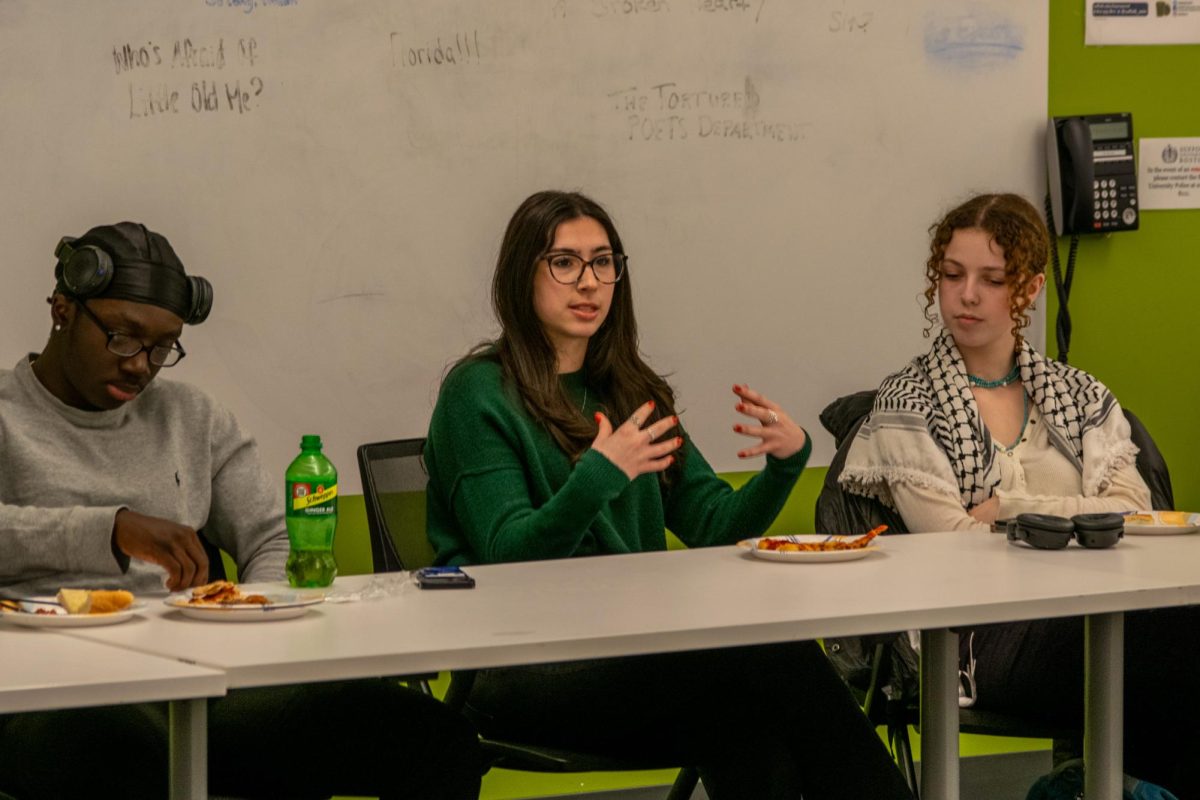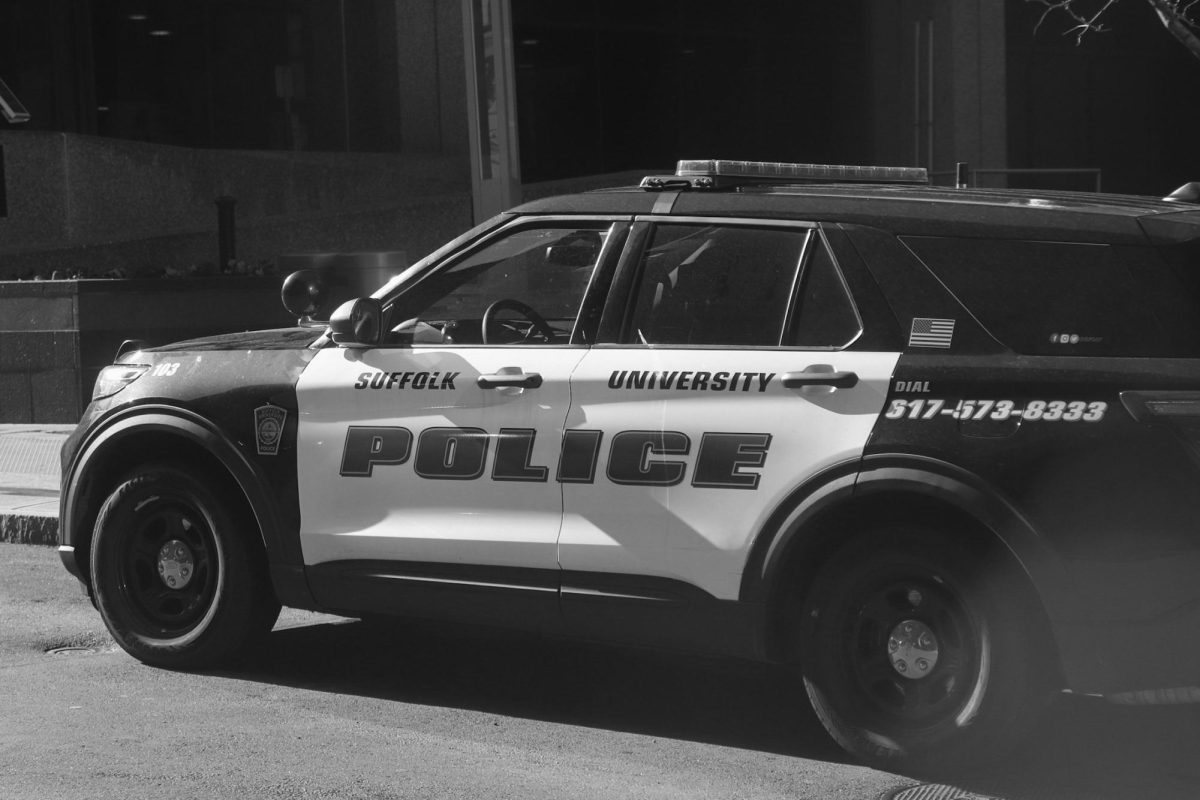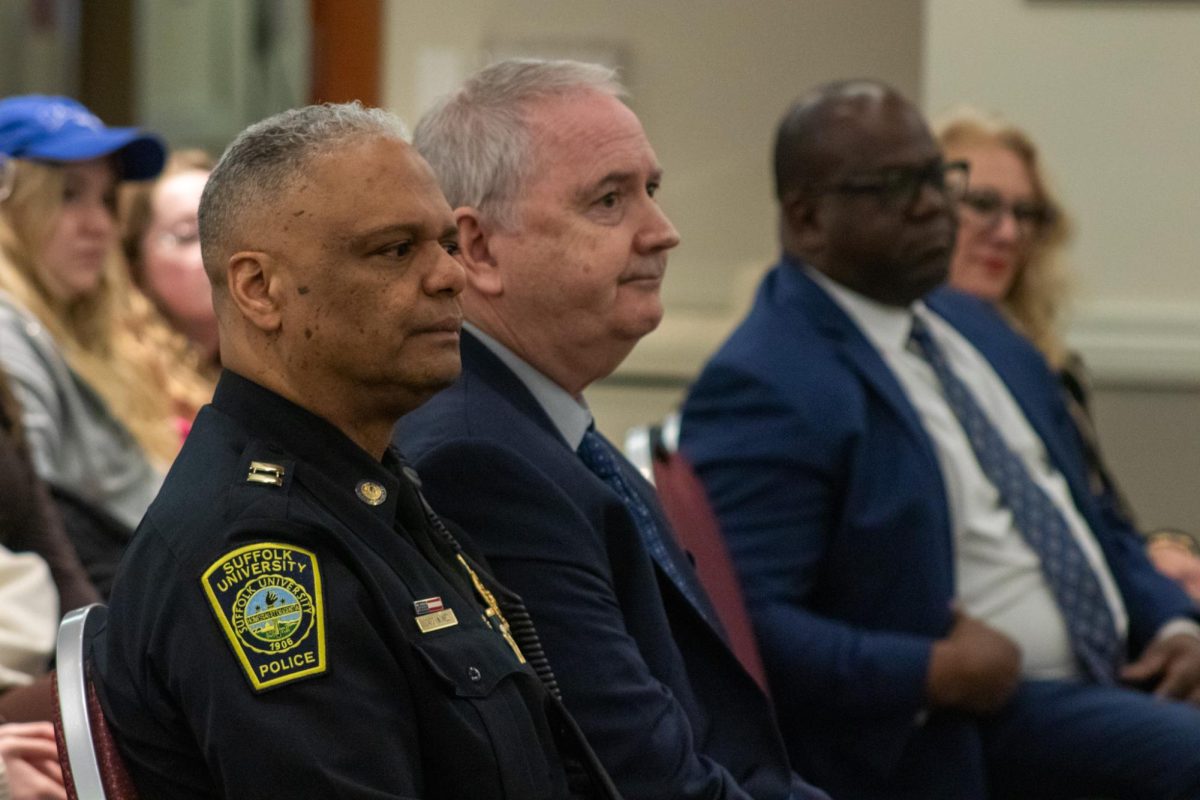Following the decision last spring to arm a portion of Suffolk University Police Department officers, an arming advisory committee comprised of students, faculty, staff and administrators formed to develop recommendations for the implementation process. The committee’s initial recommendations were available for all Suffolk community members to view and provide feedback on with two postering sessions Feb. 10 and 12.
Under the committee’s draft recommendations, all sworn uniformed officers authorized to carry a firearm would be required to wear sensor-activated body cameras. The firearms SUPD would be issued are standard handguns and stored with biometric security measures.
The committee’s recommendations require approval by President Marisa Kelly and are considered a “work in progress” that may change before the final submission. Some recommendations are subject to bargaining by the labor union that represents SUPD officers.
Also included in the recommendations were the six framework pillars that guided the community care model developed by the committee: transparency, model behavior, progressive, informed perspective, trust and diversity.
University Spokesman Greg Gatlin said that since the committee’s formation in September 2024, it has aimed to develop the arming implementation process while upholding Suffolk’s values and incorporating community perspectives.
“In working to ensure a comprehensive approach, the committee has engaged with the broader Suffolk University community to solicit input and integrate that input with its recommendations,” said Gatlin.
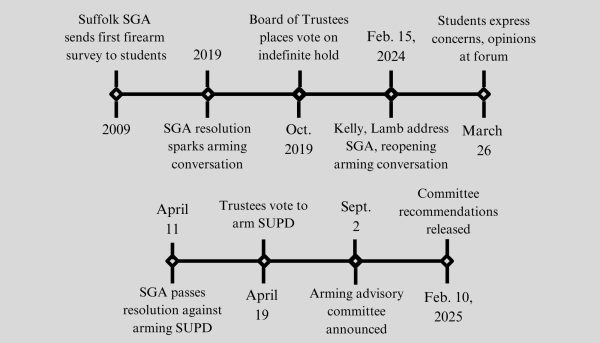
Among the recommendations were three potential “integrated co-response protocols” for handling mental health emergencies on campus, each with requirements and challenges. The committee noted that there are between nine and 20 mental health emergency calls from residence halls and less than five calls from off campus per year.
The first option would implement an unarmed group of SUPD officers available 24/7 to respond to mental health calls in all buildings, or only in residence halls, while maintaining current collaboration protocols with Counseling, Health and Wellness and human resources for employees. This would require maintaining a qualified unarmed staff at all hours, which the committee noted may be difficult.
A second option would place 24/7 mental health professionals in all buildings to respond to mental health calls. In this model, armed or unarmed officers would collaborate as needed with mental health professionals. The committee said significant oversight, recruitment and hiring of mental health would be necessary to fully staff buildings at all times under this model.
If an emergency occurs when CHW is open, students are referred to the office in person under the current protocol. Outside of business hours, students are referred to the 24/7 crisis line, ProtoCall. Regardless of location, transport to the emergency room is provided if necessary.
For mental health emergencies in public areas near campus and involving non-Suffolk individuals on campus, SUPD will coordinate referral to the Boston BEST team that operates through Boston Medical Center. Students off-campus will be referred to their local first responders as necessary.
The third option would maintain the current protocol for responding to mental health emergencies. In residence halls, residence life leads the response with assistance from SUPD. At academic or administrative buildings, SUPD leads the response and coordinates necessary resources. A potential challenge in this model would be the need for armed officers to respond when unarmed officers are unavailable, according to the committee.
Under the whole committee, the community policing subcommittee focused on reviewing the current community policing practices at SUPD and opportunities for SUPD to strengthen communication and relationships with the Suffolk community, which included interviews with SUPD officers and a focus group with students. The committee found key challenges to community policing based on resistance from “some stakeholder groups,” perceptions and stigmas of policing and guns and the location of Suffolk’s campus.
Based on its findings, the subcommittee recommended potentially revising SUPD’s current community policing policy document, increasing communication from SUPD about policies and events, sustained engagement and relationship building between SUPD and the Suffolk community and clearly distinguishing armed sworn officers from security officers at the entrances of campus buildings. The subcommittee said a standing committee to continuously engage with the community should also be considered.
According to the subcommittee, it is necessary to solicit broader feedback in the form of surveys, interviews and focus groups of community members about perceptions of safety and what is needed to feel safe with the implementation of armed officers on campus.
“This type of feedback and analysis aligns with the problem-solving aspect of community policing and is critical to the implementation of arming officers in a way where everyone feels safe,” wrote the subcommittee.
The results from this feedback could inform the implementation protocols and engagement efforts, schedules of trainings and events and allocation of SUPD resources, according to the subcommittee.
The subcommittee on training recommendations outlined a potential timeline for training new sworn officers with hands-on skills and professional development. It includes minimum requirements for recruitment and details of material covered in training.
Student officers must be at least 21 years old, employed or sponsored by an authorized law enforcement department and successfully complete the Massachusetts Human Resource Division’s Physical Ability Test and medical examination.
These student officers must complete a 20-week Municipal Police Training Committee Recruit Officer Course, followed by 12 weeks of field training with a senior officer. Field training includes learning about Suffolk’s campus and community, policies and procedures and education on the practical aspects of law enforcement and community service.
Following the initial training period, officers would continue ongoing training and events, including annual firearm qualifications, de-escalation tactics and daily shift training. Officers are required to attend MPTC In-Service programs totaling 40 hours each year per Massachusetts state law.
In addition to ongoing training programs, outsourced continuing education would provide supplemental training from vetted third-party organizations to officers as available.
The committee recommended officers use MILO Range Simulator and Simunition FX Training, which provide simulated, interactive training for decision-making and non-lethal stress-based scenarios for hands-on skills. Under professional development, the committee recommended improving assessment of mental health and other calls to ensure “appropriate response and resource allocation,” residence hall protocol training and increasing opportunities for SUPD to connect with the community professionally.
For equipment and its security, the committee recommended biometric storage requiring an authorized officer’s fingerprint to access a firearm, which would be stored again after each shift. Body cameras worn by officers would turn on if the officer, or one nearby, draws their weapon.
“If an SUPD officer draws a firearm, their body camera will automatically activate. Additionally, all SUPD body-worn cameras within 30 feet will also automatically activate,” said Gatlin.
In all other situations, officers would manually activate body cameras per SUPD policies, according to Gatlin.
Other potential equipment includes secure triple retention system holsters that protect against accidental weapon release and unauthorized access. Officers will not have long guns or rifles.
Armed sworn officers would conduct “round-the-clock patrol” on public streets adjacent to campus, operating out of two substations in Sargent Hall and Sawyer. Gatlin said the substations would be used for armed sworn officers to complete administrative tasks. The Ridgeway Building would remain as the main SUPD station.
Unarmed officers would be deployed to respond to non-life-threatening incidents when possible. The committee included a model of response times for life-threatening emergencies based on the locations of suggested substations.
Community members can provide feedback on the committee’s recommendations through a survey until Feb. 19 at 3 p.m. The feedback collected through the form will be considered and incorporated into a report for Kelly to review.
